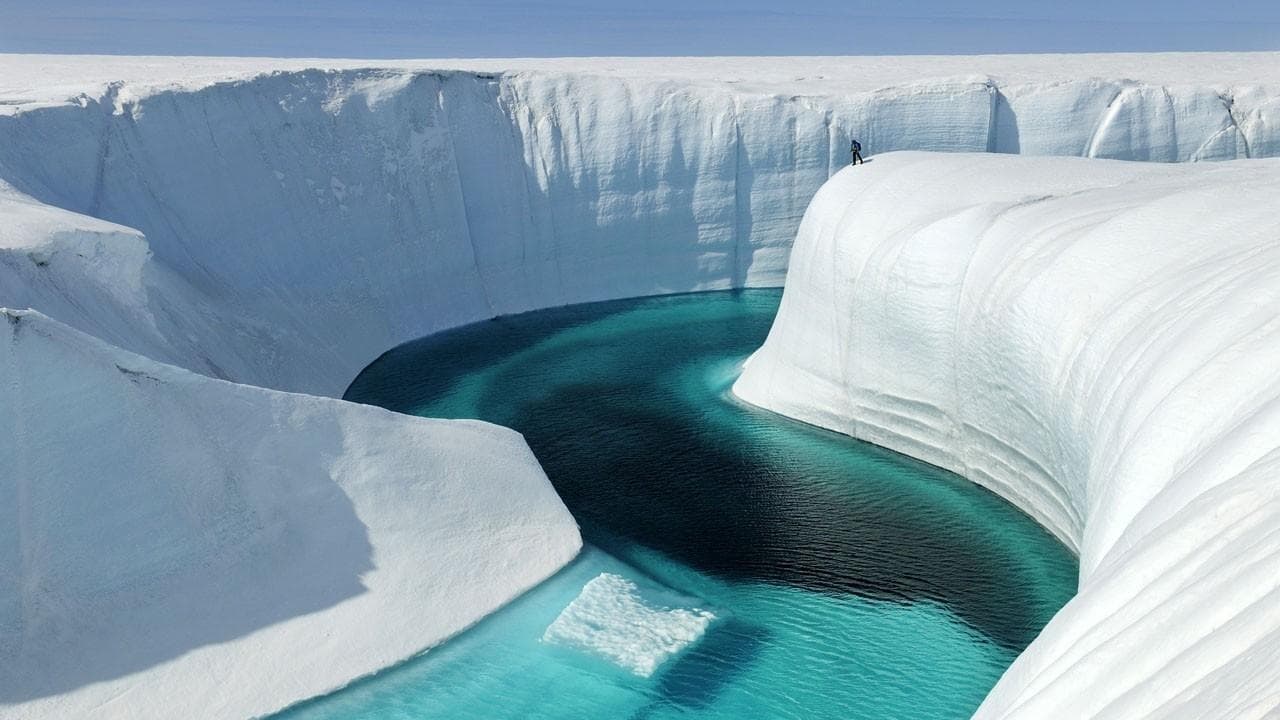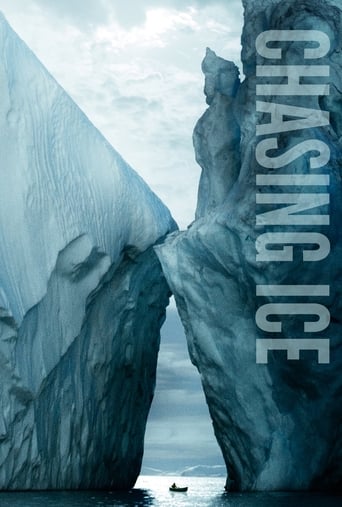

As one who has been concerned about man's negative impact on the environment, this movie still manages to draw me to the edge of my seat by the way it captures the polar warming impact in an absolutely stunning portrayal of the massive glacial melt happening within a short time. I think every young person must watch this. It is an excellent product of a very resourceful and fiercely focused individual and is definitely more worthy of one's time than even the most profitable Hollywood blockbuster.@Dave - what is the probability of that computer in front of you coming together purely by evolution with zero intelligent input? If you can calculate that, even though it is just hypothetical, then you are a scientist. Then you can comment on evolution. Otherwise, pipe down on that topic.
... View MoreChasing Ice is simply one of the best documentaries of the year. It shows how effort, dedication, and commitment can produce images that can justify change in global policy and public perception.It's subject, the retreat of glacial ice due to climate change, is nothing new, but this is the story of one man's ability to singlemindedly pursue the evidence with a dedicated team: James Balog is a man with a mission.Beautifully shot with mesmerizing ice images, and furthermore, a tale of real human endeavor this is a documentary that rewards the viewer beyond education or expectation - I would say warmly recommends, but perhaps, chilling is more appropriate here.
... View MoreWhen I came across Chasing Ice, I was very enthusiastic. I always loved the Great North and documentaries, but even more these two combined. I, for example, loved Werner Herzog's Encounters at the End of the World (2007) although it was, this time, the South Pole.Chasing Ice follows the ambitious project of National Geographic photographer James Balog who, after first doing a short project on glacier, saw the impact it had and decided he had to do more than that. That's when he decided to put in place a massive scale Glacier Watch Unit by implementing cameras to take many many pictures so that afterwards, in time lapse, the glacier could be seen moving. The project surveyed glaciers in Greenland, Alaska, Canada and Iceland for a few years. This documentary is the story behind it.The documentary starts with a mix of random news cast about global warming and natural disasters. I always considered myself a skeptic about global warming, not because I don't believe that the ice is melting, but because I know the planet has gone through a lot and is still kicking. I was quite surprised and forgot about the global warming for a while as the work and photos of James Balog were being shown. It is simply breathtaking.Once their project started, the implementation of cameras, reminded me a lot of The Cove (2009) in that they also faced technical difficulties (one has to realize that the cameras were and had to function in the worst possible condition). I felt a very human connection as the documentary also underlines the risks, the annoyances (for example when a fox has eaten away at the cable or when an electronic chip has been malfunctioning and they just traveled across the world to realize there were no shots taken) but also the family of James Balog who we briefly see and the health issues he faces with his knee. It all helps to make the actual work they accomplished all so much tastier and the evidence about the glaciers are hard to dismiss.I found it to be one of the most spectacular display of nature images. The ending is, without surprise, a warning for the public to take into account the danger of our behaviors. I think that this might throw people off, but I'd say it's a necessary evil. I don't have that much faith in humanity myself, but if there is anything that can inspire something to be done, it will be through these images, because texts and statistics never changed behaviors.It moved me.I liked: Breathtakingly beautiful. Human aspects. Harsh conditions. Team work. Stunning glaciers.I disliked: Yes, it holds a political agenda, but where does mankind and politics differ when it comes to the apocalypse?88/100 One of the most striking documentary I've seen, if not for the scientific dimension but simply for the beauty of the ice. And to paraphrase James Balog, as a photograph it is so beautiful, but as a human being it's very sad.More reviews at: www.theordinaryreview.blogspot.com
... View MoreJames Balog has one goal in mind throughout this entire documentary: to photographically demonstrate the rapid melting of our earth's glaciers. He doesn't throw statistics at us (okay, maybe one or two), and he doesn't bring politics into it, all he does is undeniably prove that the vast majority of the world's glaciers are disappearing right before our eyes.What this documentary does is capture his journey to photograph these glaciers. It shows his struggles, his failures, and his successes. Yes, he may come off as a bit of a hero, but what he's doing truly is heroic and simply cannot be missed. The photography throughout this film is spectacular--absolutely gorgeous. In fact, he photographed an article on this topic for National Geographic, and if you've seen their photographs, you know the level of quality we're talking about here.At the same time, however, there's kind of this sense of impending doom amidst all the beauty. It essentially shows all the damage humanity has done, in the past ten or so years alone, and I can only hope it's not too late to fix at least some of what we've caused. If this documentary can't get you to see the world and it's people differently, then I don't think much else can, his results are simply that stunning.
... View More